
Many people think English is the lingua franca of the world. Well, it depends on exactly what you’re trying to accomplish. Sitting in a restaurant in Paris or shopping in a fancy boutique in Milan, English would quite certainly do well to get what you want. But when it comes to business, in order to grow and compete in a specific market, you have to speak the language your target audience speaks.
“If I am selling to you, then I speak your language, aber wenn du mir etwas verkaufst, dann du muβt Deutsch sprechen” (… but if you want to sell something to me, then you must speak German.) – Former German Chancellor Willy Brandt
Providing an English-only website while simultaneously trying to promote your company across foreign markets gives the impression that you are not prioritizing customers in markets where English is not the primary spoken language, which could result in wasted effort and missed opportunities.
A few other good reasons to translate your website:
- IDG Globalization Report: “Internet consumers are also up to four times more likely to shop and purchase online from websites that support their native language.”
- Content translation speaks the language of ROI: “Visitors stay twice as long if a website is in their own language.” (Which, by the way, is also great for SEO).
- Language Guide for European Business: “Where the website exists in the native language, there are better sales, better brand recognition, and better and easier communication.”
At this point, I think we can all agree that translating is the right choice to make. But is website translation really enough?
There are at least two other steps you need to take in order to grow effectively in a foreign market.
1) Do thorough research when choosing a market.
Identify what countries you are targeting and the potential clients who would be interested in buying your product or service. Can you sell to them and can they buy from you? Do they need what you offer? Who will be your competition? How are customers going to pay you and get the product/service you sell them? Try to gather as much in-depth information as possible about customers’ culture, behavior, where they live—and of course, what languages they speak.
Pay attention, because some languages are spoken in more than one country, but in most cases they are not exactly the same language.
Some examples:
French is widely spoken not only in France but also in Quebec, Switzerland, Belgium, North African countries and elsewhere. Even if the major difference among these French variations, or dialects, is the accent, there are also some words which differ from the French spoken in France and the French spoken in other francophone regions. The difference is even more evident in the many variants of Spanish spoken from Madrid to Buenos Aires, which have some big variants in vocabulary.
Sometimes speaking a language is a choice. Russian is spoken not only in Russia, but also widely in Belarus, Ukraine, Kazakhstan, and former Soviet countries. While speaking Russian will be more than sufficient in some of these countries, in others such as Ukraine, speaking Russian is a clear ideological and political statement. So if you are targeting customers in Eastern Ukraine, you can use Russian. If your audience lives in Lviv, you should opt for Ukrainian instead.
Mandarin Chinese is spoken (with some dialectal variations) in Mainland China and Taiwan, but if in the first case it’s written exclusively with simplified characters, in Taiwan traditional characters are used instead. In Hong Kong, most people speak Cantonese Chinese, which is written exactly as Mandarin Chinese, with traditional and, less frequently, simplified characters, but pronounced very differently. It may sound confusing, so let’s take a look at a practical example.
Here is the home pages of Nike’s official websites for Mainland China, Hong Kong, and Taiwan.
Mainland China
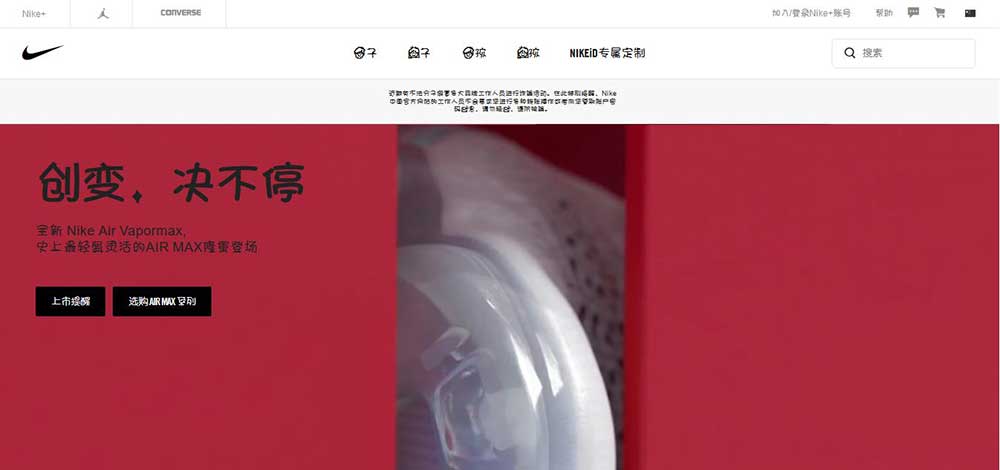
Hong Kong
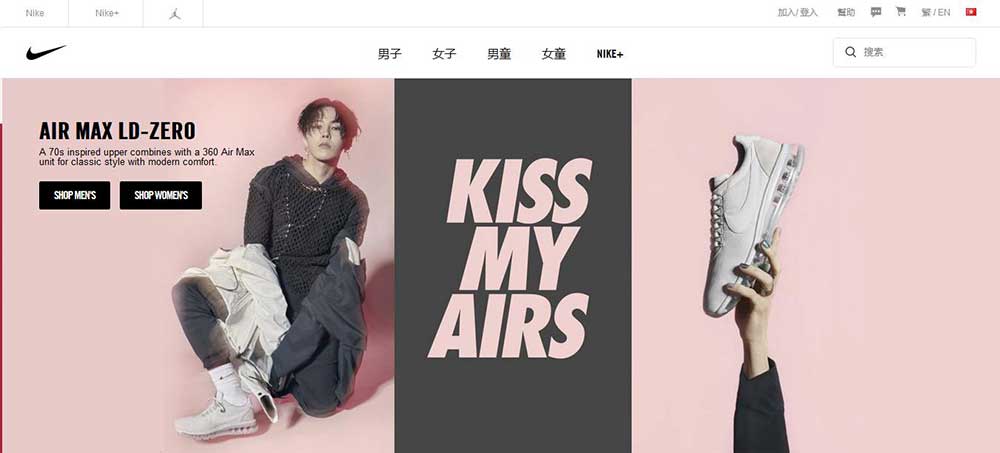
Taiwan
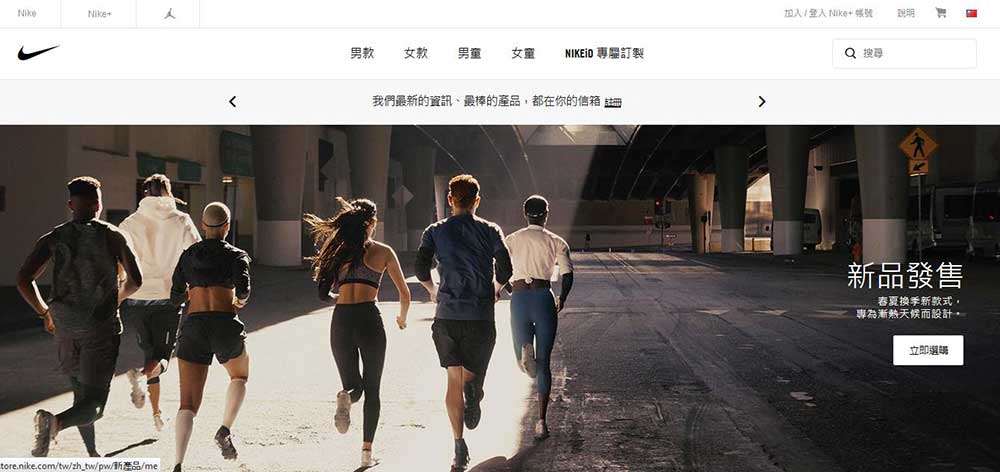
As you may have noticed, these three home pages feature different languages. For Mainland China, website content uses simplified characters, while in the Taiwanese version traditional characters are used instead. Hong Kong’s website displays English text (perhaps because English, along with Chinese, is the official language of Hong Kong, or because many expats live there).
Let’s focus on word choice. In the Taiwanese version, the word used for “search” is “搜尋” (sou1 xun2, written traditionally), while China and HK use “搜索” (written simplified and pronounced sou1 suo3 in Mandarin and sau2 saak3 in Cantonese). In fact, in HK and China the word “搜寻” (sou1 xun2 written simplified) is used to indicate more in-depth research, hunt, or investigation, and would sound strange used in this context.
It’s quite similar to the choice of “basket” (UK English) or “cart” (US English) in an online store.
Besides the language aspect, the three home pages feature significantly different designs, images and even products.
Language is only one aspect to be taken into account while adapting the website to a market.
This takes us to another point.
2) Determine whether you need translation or localization
Localization means adapting a product or content to a specific market or audience. Translation is an important part of this process, but not the only one. To fully localize your website to a country you should also keep an eye on:
- Measurements: If you are a U.S.-based website, keep in mind that most people in European and Extra-European countries have no clue how long a foot or an inch is. Make sure to give metric equivalents.
- Colors: Colors can have different connotations from one country to another. For example, in Italy, the color red symbolizes passion and love, while in China it is the color of luck and in Russia is associated with communism and politics. In Italy, a “yellow book” is a detective story, but in China it’s a book with pornographic content. In Russia, “yellow press” has the same meaning as in English. In Western cultures, white means elegance and purity, but in some Asian countries it represents death and bad luck.
- Pictures: They have to be professional, high quality and localized! Some images can remain acceptable cross-culturally, while others could give rise to scandal. Furthermore, your visitors must be able to relate to what they see on your website. This is why companies publish country-related pictures. Another “sporty” example: in most Western countries, the Adidas website features the American model Karlie Kloss, while in China, users see the German-born Chinese actress Janine Chang.
Adidas France
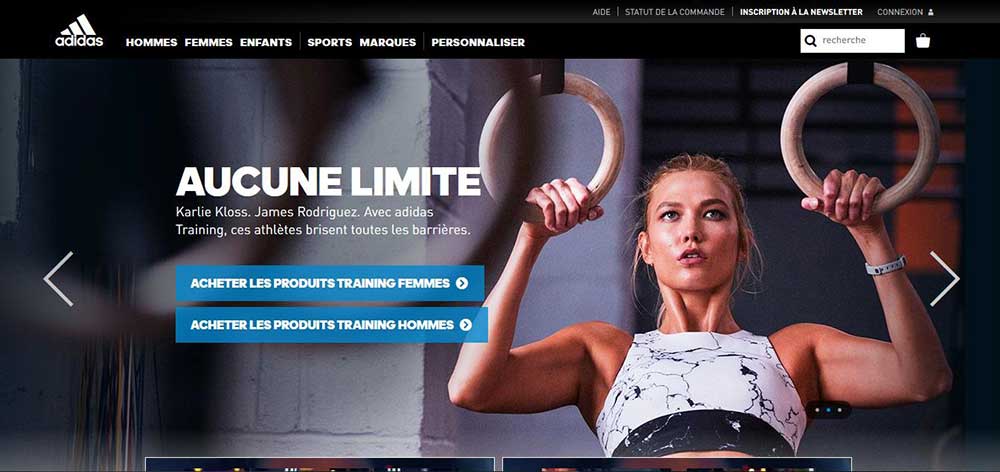
Addidas China

Currency units: It may be taken for granted, but this aspect also requires localization, especially for internet stores.
- Date formats: You’re organizing an event on 6/10/2017? Be more specific, otherwise your American guests will knock at your door on June 10, while most of your European guests will arrive on October 6.
- Videos: Videos are a great way to increase conversion rate and transmit information to your customers. To maintain their high effectiveness in foreign markets, you should at least subtitle or dub them. Better yet, shoot or design country-specific videos.
- Customer interests and desires: Customers in each country have different ambitions and goals, as well as general tastes and preferences. These have to be taken in account so that your website displays the products or services, which are most appealing to each specific audience.
- Website design: In the localization process, you will need to prepare for differences in text length in the different languages. English website content is usually shorter than in other languages such as Russian, German, or Spanish. On the contrary, Asian languages characters usually allow for saving a lot of space. In Arabic-speaking regions, users write and read right to left, which will impact your website’s design.
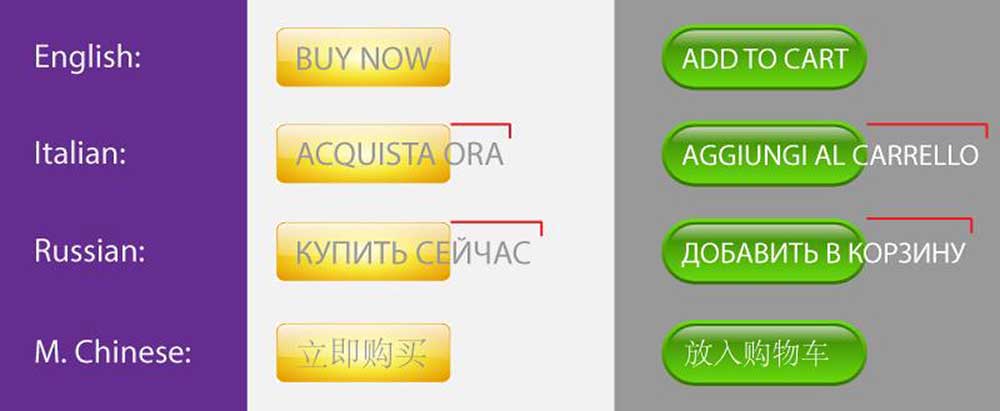
Localization should be always carried out with the help of a professional translation agency and/or an expert of your target market(s). Having a native language speaker in your company doesn’t mean that he/she is qualified to do this work, nor is your niece or relative living in a foreign country! And forget about Google translator, too.
Mistranslation and poor translation could lead to disaster. A famous example of this is when Nikita Khrushchev’s “Мы вас похороним!” was interpreted as “We will bury you!” instead of “We will outlast you!” (See more here.) Poorly translated or machine-translated content negatively affects the potential customer’s perception of the company and its products and/or services, so you should always publish high-quality content and choose professional website translation services.






disqus comments